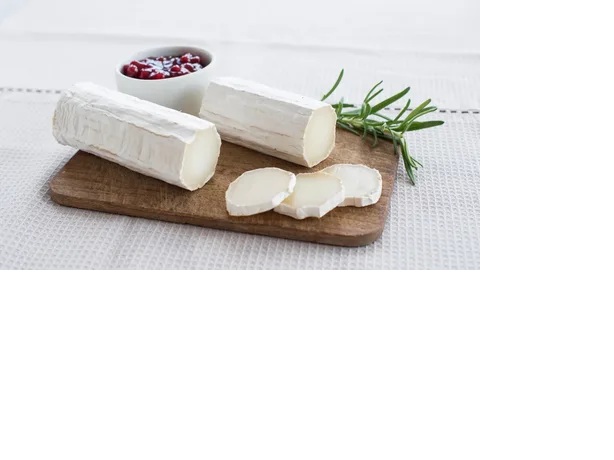Goat cheese, also known as chèvre, is a creamy, tangy cheese made from the milk of goats. It has been a staple in many cuisines for centuries and is beloved for its unique flavor and versatility. In this comprehensive guide, we will delve into the nutritional profile of goat cheese, explore its various health benefits, and provide exciting recipe ideas to incorporate this delicious cheese into your meals.
Nutrition Profile of Goat Cheese
Goat cheese offers a rich array of nutrients while being relatively lower in fat and calories compared to some other cheeses. Here’s a breakdown of its nutritional composition:
Macronutrients:
Protein
Goat cheese is a good source of protein, with approximately 5 grams per ounce. Protein is essential for muscle repair and growth, making goat cheese a valuable addition to a balanced diet.
Fat
While goat cheese contains fat, it typically has lower fat content than cheeses made from cow’s milk. A one-ounce serving of goat cheese provides around 6 grams of fat, with much of it being heart-healthy unsaturated fat.
Carbohydrates
Goat cheese is low in carbohydrates, making it suitable for low-carb and ketogenic diets.
Micronutrients:
Calcium
Like all dairy products, goat cheese is rich in calcium, a mineral vital for bone health and muscle function. A single ounce of goat cheese provides approximately 140 milligrams of calcium.
Vitamins
Goat cheese contains various vitamins, including vitamin A, vitamin B12, and riboflavin (vitamin B2), which play roles in maintaining healthy vision, neurological function, and energy metabolism.
Other Nutrients:
Sodium
Goat cheese tends to have lower sodium content compared to some other cheeses, making it a suitable option for individuals watching their sodium intake.
Probiotics
While not as prevalent as in fermented dairy products like yogurt, some types of goat cheese may contain beneficial probiotic bacteria, which can support gut health.
Health Benefits of Goat Cheese
Beyond its delicious flavor, goat cheese offers several health benefits:
Digestive Health:
Goat cheese contains less lactose than cow’s milk cheese, making it easier to digest for individuals with lactose intolerance. Additionally, the presence of probiotics in some types of goat cheese may promote gut health and improve digestion.
Bone Health:
The calcium content of goat cheese supports bone density and helps prevent osteoporosis, especially important for maintaining bone health as we age.
Nutrient Absorption:
The fat content in goat cheese aids in the absorption of fat-soluble vitamins, such as vitamin A, D, E, and K, enhancing their bioavailability in the body.
Weight Management:
With its moderate protein and lower fat content compared to some other cheeses, goat cheese can be a satisfying addition to meals while helping to manage calorie intake.
Reduced Allergenicity:
Some individuals who are allergic to cow’s milk may find that they can tolerate goat cheese better due to differences in protein structure and composition between goat and cow milk.
Recipe Ideas with Goat Cheese
Now that we’ve explored the nutritional benefits of goat cheese, let’s discover some delicious ways to incorporate it into your culinary repertoire:
Goat Cheese and Fig Salad:
Combine fresh arugula or mixed greens with sliced figs, toasted walnuts, and crumbled goat cheese.
Drizzle with a balsamic vinaigrette for a perfect balance of sweet, tangy, and creamy flavors.
Goat Cheese Stuffed Chicken Breast:
Butterfly chicken breasts and stuff them with a mixture of goat cheese, sun-dried tomatoes, and fresh herbs like basil or thyme.
Bake until the chicken is cooked through and the cheese is melty and golden brown.
Goat Cheese and Roasted Red Pepper Dip:
- Roast red bell peppers until charred, then peel and remove seeds.
- Blend the roasted peppers with creamy goat cheese, garlic, lemon juice, and olive oil until smooth.
- Serve with pita chips or sliced vegetables for a flavorful appetizer or snack.
Grilled Vegetable and Goat Cheese Quesadillas:
- Grill sliced vegetables such as zucchini, bell peppers, and red onions until tender.
- Spread goat cheese on tortillas, add the grilled vegetables, and sprinkle with shredded mozzarella cheese.
- Grill until the tortillas are crisp and the cheese is melted.
Goat Cheese and Honey Crostini:
- Toast slices of baguette until golden brown.
- Spread each slice with creamy goat cheese and drizzle with honey.
- Garnish with fresh herbs like thyme or rosemary for an elegant and effortless appetizer.
Conclusion
Goat cheese is not only delicious but also offers a range of nutritional benefits. Whether you’re looking to enhance the flavor of salads, add richness to main dishes, or create impressive appetizers, goat cheese can elevate your culinary creations. Experiment with different recipes and savor the creamy, tangy goodness of this versatile cheese while reaping its healthful rewards.

